In the luminous yet often tumultuous tapestry of 20th-century literature, few figures stand as luminously and tragically as Sylvia Plath. Her work, a beacon of confessional poetry, glistens with a stark and unflinching honesty, illuminating the labyrinthine corridors of the human psyche. As we delve into the breadth and depth of her literary oeuvre, it becomes apparent that Plath’s genius lies not merely in her impeccable command of rhythm and vocabulary but in her audacious exploration of themes that many would deem too harrowing to articulate.

I. The Genesis of a Literary Prodigy: Early Life and Influences
A. Childhood and Early Influences
Sylvia Plath was born on October 27, 1932, in Boston, Massachusetts. From an early age, she exhibited a prodigious talent for writing, a gift that was undoubtedly nurtured by her parents, particularly her father, Otto Plath, a professor of biology with a passion for the written word. The death of Otto Plath in 1940, when Sylvia was just eight years old, cast a long and profound shadow over her life and work, a theme that would resurface in her poetry with haunting regularity.
B. Academic Brilliance and Early Publications
Plath’s academic journey was nothing short of remarkable. She attended Smith College on a scholarship, where she continued to hone her craft. Her early poems and short stories were published in national magazines, earning her a modicum of fame and a Fulbright Scholarship to Newnham College, Cambridge. It was here that she met and married the English poet Ted Hughes, a union that would be both creatively fecund and personally tumultuous.
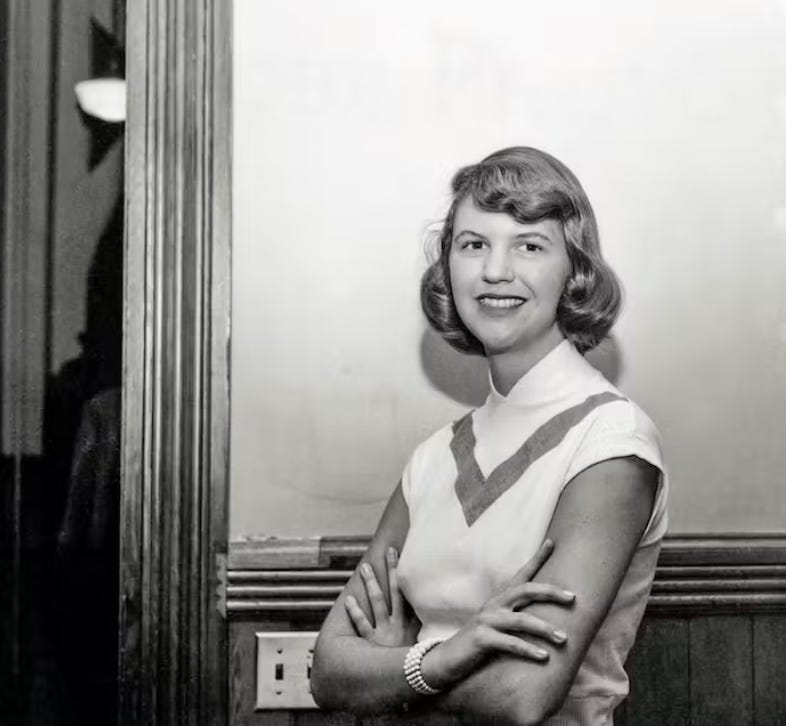
II. The Colossus: First Steps into Literary Immortality
A. Publication and Reception
Published in 1960, “The Colossus” marked Plath’s formal entry into the literary world. This collection of poems is a testament to her burgeoning prowess, showcasing a meticulous attention to form and a keen psychological insight. Each poem in “The Colossus” is a delicate interplay of rhythm and meaning, encapsulating the poet’s complex relationship with the world around her.
B. Thematic Concerns
In “The Colossus,” Plath grapples with themes of death, rebirth, and the existential angst of the human condition. The titular poem, “The Colossus,” exemplifies this, drawing on the image of the shattered statue of the Colossus of Rhodes to symbolize the fragmented nature of her psyche and her struggle to piece together her identity in the wake of her father’s death.

III. Ariel: The Zenith of Confessional Poetry
A. The Creative Explosion
“Ariel,” published posthumously in 1965, stands as Plath’s magnum opus. Written in the last months of her life, these poems are imbued with a raw, unfiltered emotional intensity that is both breathtaking and unsettling. “Ariel” is often regarded as the pinnacle of confessional poetry, a genre that Plath revolutionized with her unapologetic exploration of personal trauma and mental illness.
B. Iconic Poems and Themes
- “Daddy”
“Daddy” is perhaps Plath’s most famous and controversial poem. In it, she addresses her father, comparing him to a Nazi and herself to a Jew, a stark and provocative metaphor that underscores her feelings of oppression and betrayal. The poem’s rhythm is insistent and driving, mirroring the relentless nature of her psychological torment.
- “Lady Lazarus”
“Lady Lazarus” is another cornerstone of “Ariel.” Here, Plath adopts the persona of a woman who repeatedly rises from the dead, a metaphor for her own struggles with depression and suicide. The poem’s structure and rhythm convey a sense of defiance and resilience, a testament to Plath’s indomitable spirit even in the face of overwhelming despair.
- “Ariel”
The titular poem “Ariel” is a masterful depiction of liberation and transcendence. The poem’s swift, galloping rhythm mimics the sensation of riding a horse, capturing a moment of ecstatic release and unbounded freedom. It is a stark contrast to the darker themes prevalent in the rest of the collection, offering a glimpse of hope amidst the tumult.
C. Linguistic Brilliance
Plath’s use of language in “Ariel” is nothing short of revolutionary. Her vocabulary is rich and evocative, her imagery vivid and often unsettling. She wields words with surgical precision, creating a visceral impact that lingers long after the poem has ended. Her innovative use of metaphor and simile, coupled with her unerring sense of rhythm, sets her apart as one of the most formidable poets of her generation.


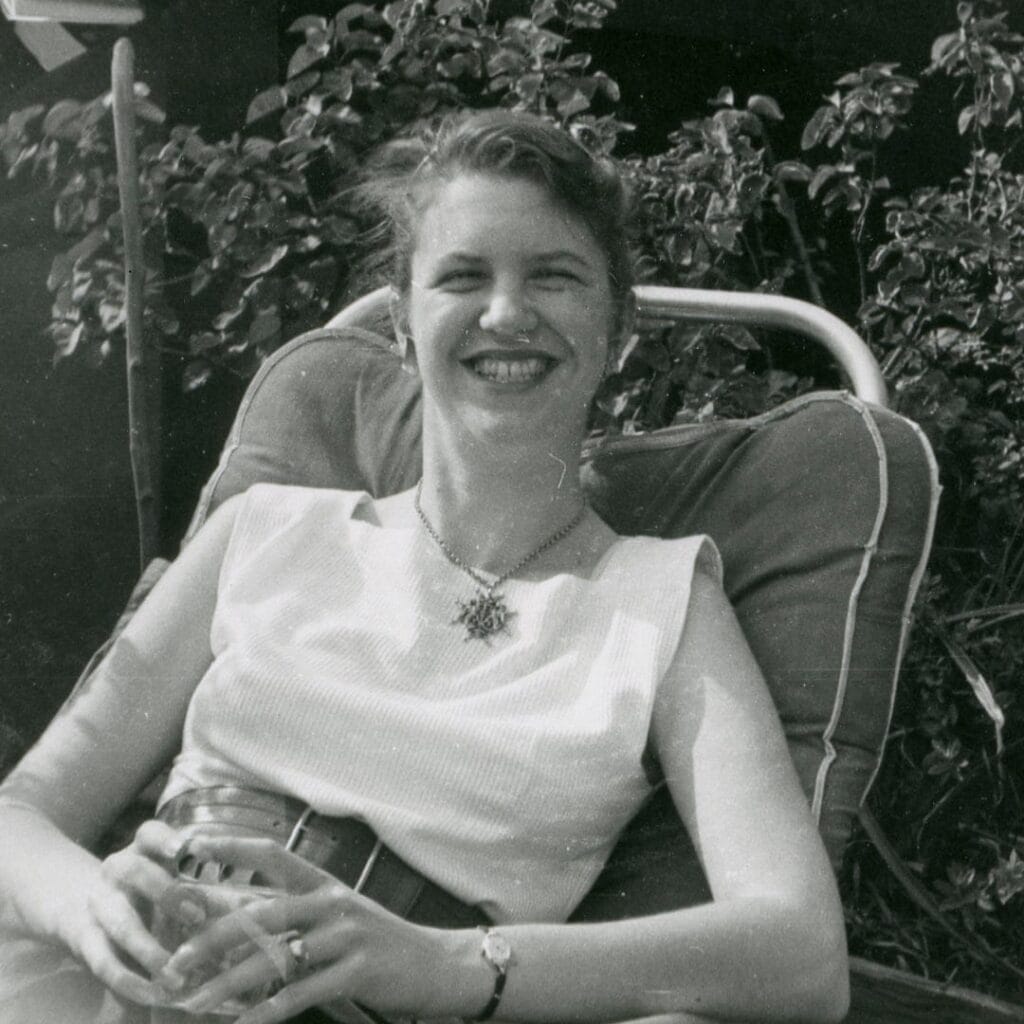

IV. The Bell Jar: A Prose Masterpiece
A. Autobiographical Elements
“The Bell Jar,” published under the pseudonym Victoria Lucas in 1963, is Plath’s only novel, a semi-autobiographical account of a young woman’s descent into mental illness. The protagonist, Esther Greenwood, mirrors Plath’s own experiences, offering a poignant and unvarnished portrayal of the struggles faced by women in a patriarchal society.
B. Narrative Structure and Style
The novel’s narrative is marked by a stark, unadorned prose style that mirrors the protagonist’s increasingly fragmented state of mind. Plath’s keen observational skills and her ability to articulate the minutiae of daily life lend the novel a sense of immediacy and intimacy. The use of the bell jar as a metaphor for Esther’s sense of entrapment and suffocation is particularly poignant, capturing the essence of her psychological ordeal with devastating clarity.
C. Critical Reception and Legacy
Upon its release, “The Bell Jar” received mixed reviews, with some critics praising its honesty and others deeming it too bleak. However, over time, the novel has come to be regarded as a classic of modern literature, a seminal work that continues to resonate with readers and scholars alike. Its unflinching exploration of mental illness and its critique of societal expectations for women remain profoundly relevant.
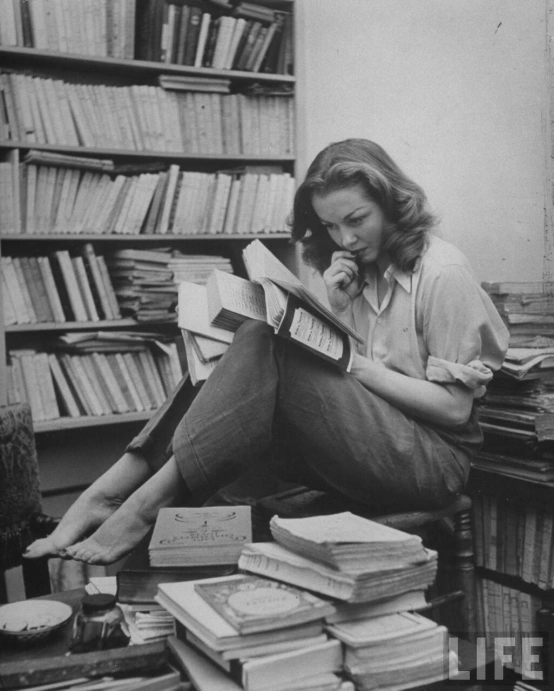
V. Winter Trees and Crossing the Water: The Posthumous Collections
A. Winter Trees
Published posthumously in 1971, “Winter Trees” is a collection of poems that further cements Plath’s status as a literary luminary. These poems, written in the last years of her life, reflect a deepening sense of introspection and existential angst. The imagery in “Winter Trees” is stark and often haunting, evoking a sense of desolation and isolation.
B. Crossing the Water
“Crossing the Water,” also published posthumously in 1971, offers a glimpse into Plath’s transitional period between “The Colossus” and “Ariel.” The poems in this collection are marked by a sense of searching and yearning, as Plath grapples with her place in the world and the nature of her art. The collection is characterized by its lyrical beauty and its profound emotional depth.
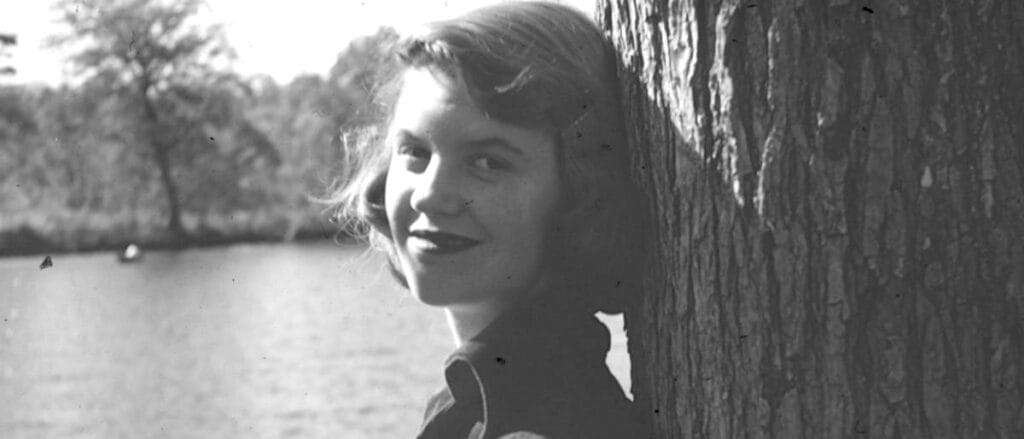

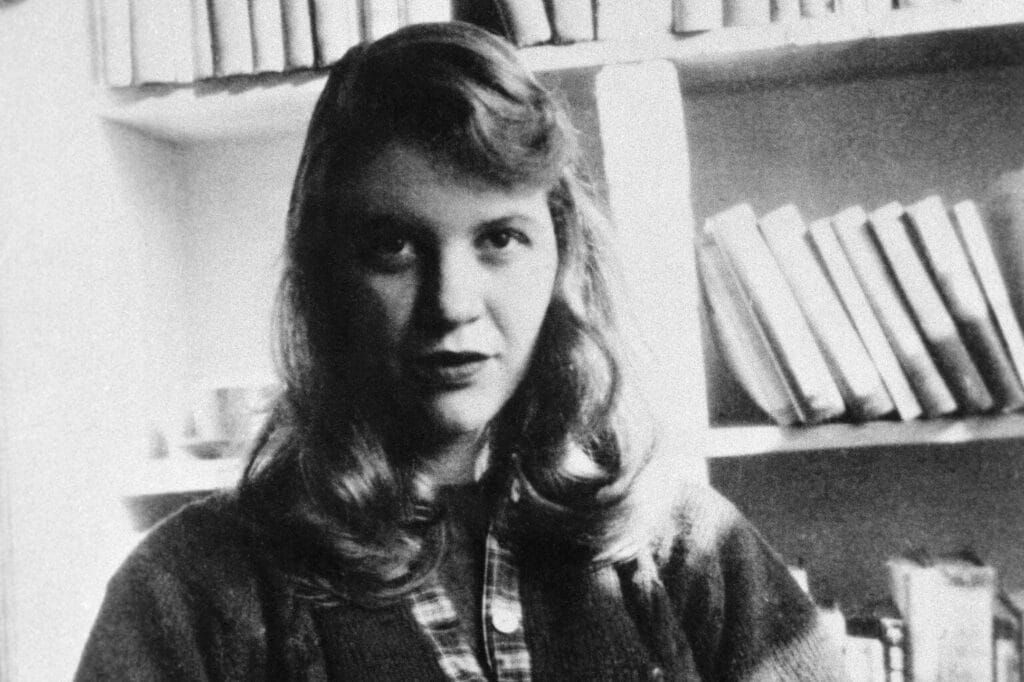

VI. Letters and Journals: The Intimate Sylvia Plath
A. The Unabridged Journals of Sylvia Plath
Published in 2000, “The Unabridged Journals of Sylvia Plath” offers an intimate look into the mind of one of the 20th century’s most enigmatic literary figures. These journals, meticulously edited by Karen V. Kukil, span the years 1950 to 1962, providing a window into Plath’s thoughts, struggles, and creative process. The entries are raw and unfiltered, revealing the depth of her intellectual curiosity and her unrelenting drive for literary excellence.
B. Letters Home
“Letters Home,” edited by Plath’s mother, Aurelia Plath, and published in 1975, is a collection of letters written by Sylvia to her family. These letters offer a more personal and affectionate side of Plath, contrasting with the darker themes prevalent in her poetry and prose. They reveal her deep love for her children, her unflagging work ethic, and her enduring sense of humor, even in the face of adversity.
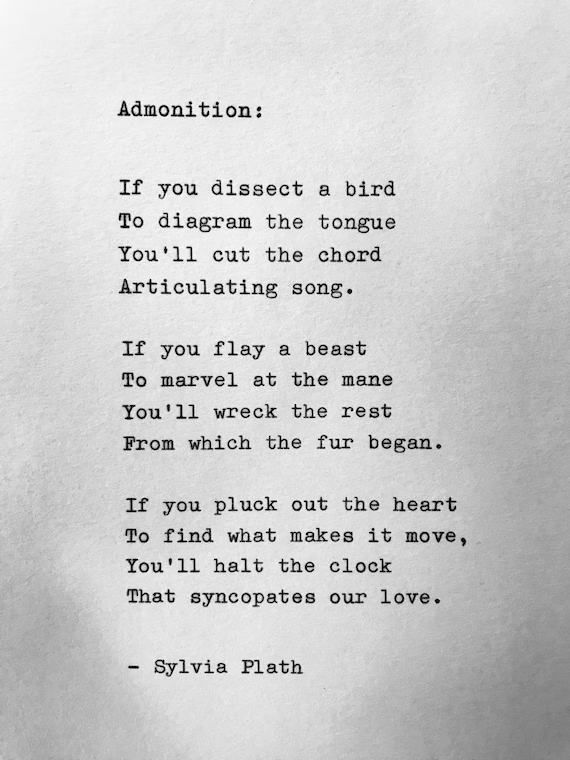
VII. The Rhythm of Sylvia Plath: An Examination of Her Poetic Technique
A. Meter and Form
Plath’s poetry is characterized by its meticulous attention to form and meter. While she often experimented with free verse, many of her poems adhere to traditional structures, such as the sonnet and villanelle. Her use of meter is precise, and she often employs enjambment to create a sense of fluidity and movement within her poems.
B. Imagery and Symbolism
The imagery in Plath’s poetry is both vivid and unsettling, drawing on a wide range of symbols to convey complex emotional states. She frequently uses natural imagery, such as the moon, the sea, and trees, to explore themes of death, rebirth, and transformation. Her use of color is also noteworthy, with stark contrasts between black and white, red and blue, reflecting the dichotomies within her own psyche.
C. Language and Vocabulary
Plath’s command of language is one of her most striking attributes. Her vocabulary is rich and varied, and she often employs unusual and unexpected words to create a sense of disorientation and unease. Her use of alliteration, assonance, and internal rhyme adds a musical quality to her poetry, enhancing its emotional impact.

VIII. The Enduring Legacy of Sylvia Plath
A. Influence on Contemporary Poetry
Sylvia Plath’s influence on contemporary poetry cannot be overstated. Her fearless exploration of personal trauma and mental illness paved the way for subsequent generations of poets to tackle similarly difficult subjects. Her innovative use of language and form has inspired countless writers, and her work continues to be studied and celebrated in academic circles.
B. Cultural Impact
Beyond the realm of literature, Plath’s life and work have had a profound impact on popular culture. Her story has been the subject of numerous biographies, films, and plays, and her work continues to resonate with readers around the world. The themes she explored—mental illness, gender roles, and the search for identity—remain as relevant today as they were in her time.
C. Personal and Scholarly Reflections
Reflecting on Plath’s legacy, it is impossible not to be moved by the depth of her talent and the tragedy of her life. Her work stands as a testament to the power of the written word to convey the most profound and personal of human experiences. Scholars and readers alike continue to find new meanings and insights in her poetry and prose, ensuring that her legacy will endure for generations to come.
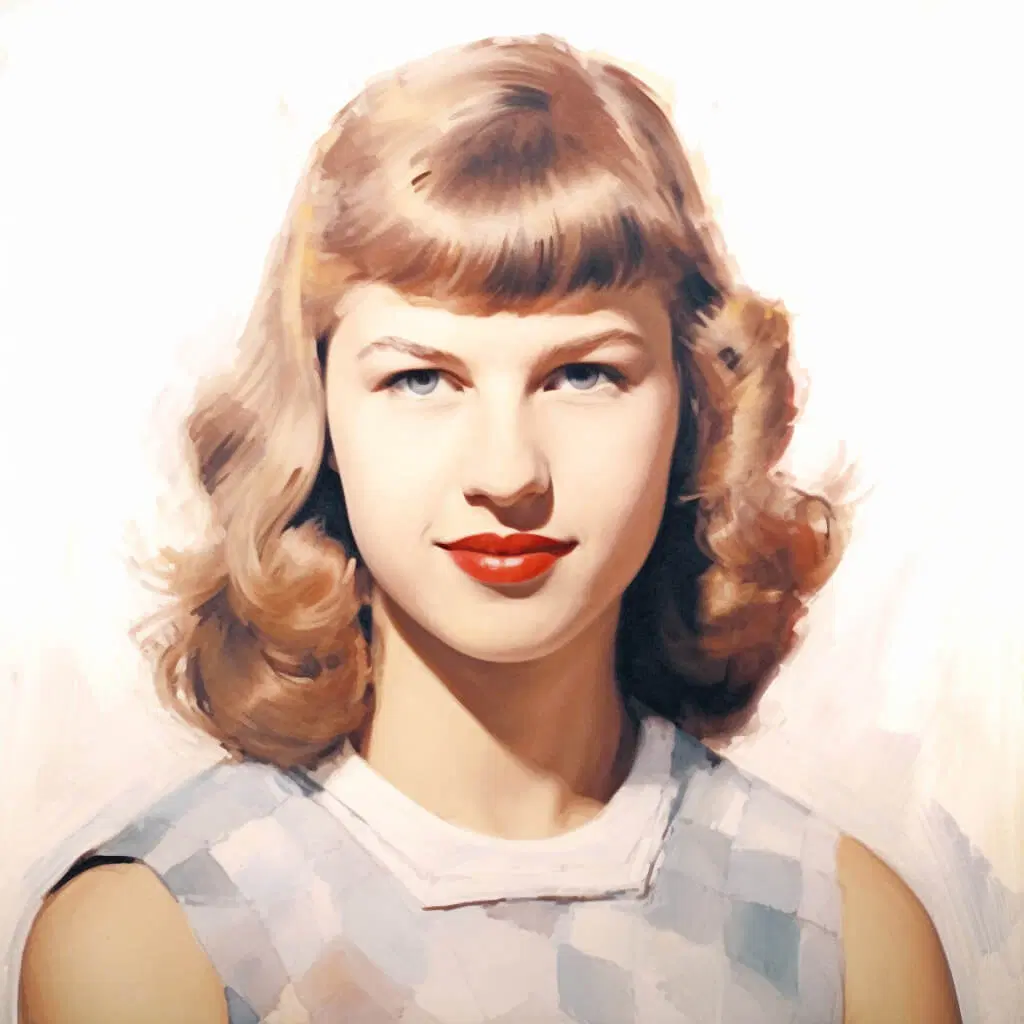

IX. Conclusion: The Unfading Brilliance of Sylvia Plath
Sylvia Plath’s literary oeuvre is a rich and multifaceted tapestry, woven from the threads of her own life and experiences. Her work is characterized by its unflinching honesty, its innovative use of language and form, and its profound emotional depth. From the early promise of “The Colossus” to the searing intensity of “Ariel,” from the haunting narrative of “The Bell Jar” to the intimate revelations of her journals and letters, Plath’s work continues to captivate and inspire.
In exploring the literary legacy of Sylvia Plath, we are reminded of the power of poetry to illuminate the darkest corners of the human soul. Her work is a testament to the resilience of the human spirit, a beacon of light in the midst of despair. As we continue to read and study her work, we honor her memory and ensure that her voice will continue to be heard, echoing through the annals of literary history.








